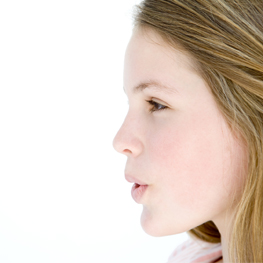
How many times have you been told to ‘just breathe’? How many times have you told your child to ‘just breathe’? ‘Just breathe’ is a common phrase used in our society when we feel the person we are with needs to calm down. For those of us who have participated in yoga or meditation, we have learned how to breathe deeply and know the benefits of deep breathing. But for those who have not experienced deep breathing, it can be a very frustrating phrase to hear.
I realized the power of children learning how to breathe deeply watching a young mom deal with her two year old’s temper tantrum. This mom called her child’s name and then started to breathe in a slightly exaggerated fashion. Within a minute, the two-year-old had stopped her tantrum and started to breathe with her mom and was completely calm. Fascinated, I asked the mom what had prompted her to use that technique with her daughter and her reply was simple: “Everyone always tells me to breathe deeply, so I thought I’d try it with her.” Since then, I have taught almost all of my young clients to breathe.
Why is it important to breathe properly?
When a person gets upset, they often go into the reptilian brain. This is the oldest part of the brain, and it triggers the fight or flight response. Children can get upset or frustrated on a regular basis, and we certainly don’t want them fighting or running away every time that happens. Deep breathing helps give our brain more oxygen and slows down our heart rate, which brings us out of the reptilian brain and we become more rational.
How to teach deep breathing
It’s not just about breathing, it’s about learning how to breathe in the right way. Here is my step-by-step process on the right way to practice deep breathing:
First, sit properly with both feet on the ground, hands are relaxed in your lap and sitting up straight, but in a comfortable position.
If you feel at ease, close your eyes and focus on breathing in through your nose and out through your mouth.
Next, begin to lengthen your breath so eventually, you are inhaling and exhaling to a slow count of five.
Put one hand on your chest and the other hand on your stomach. When breathing deeply, the hand on your stomach will move more than the one on your chest as the diaphragm expands and allows the lungs to fully fill.
As you continue to practice, you may feel your shoulders, for example, drop and start to relax. Pay attention to your body and see if you can sense any relaxation or release happening from high-tension points (shoulders, back, neck, lower back, jaw, etc.).
The most important part of this process is to practice, practice, practice. I suggest practicing deep breathing two or three times a day. If you are not able to practice when you are calm, it will be very difficult to use this calming technique when you are upset. As a parent or support person, practice with kids. That way, if a child gets upset, you can call their name and start breathing and they will fall into the rhythm with you. Make sure to exaggerate a bit so they can hear and see you even through their tears or frustration.
Have conversations with your child about when deep breathing might be useful. Besides using it to calm down when upset, it can be used to settle your child down after an exciting activity, when there’s some anxiety about a test or when it is time to go to sleep. Anytime you need to slow your heart or your mind or relax, just breathe.
Amy Godderis, MA, owns Whatever Works Counselling, a mobile counselling practice based in Calgary. She is a Canadian Certified Counsellor who works with all ages but specializes in at-risk teenagers. Visit her at whateverworkscounselling.com
Calgary’s Child Magazine © 2024 Calgary’s Child